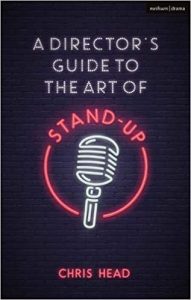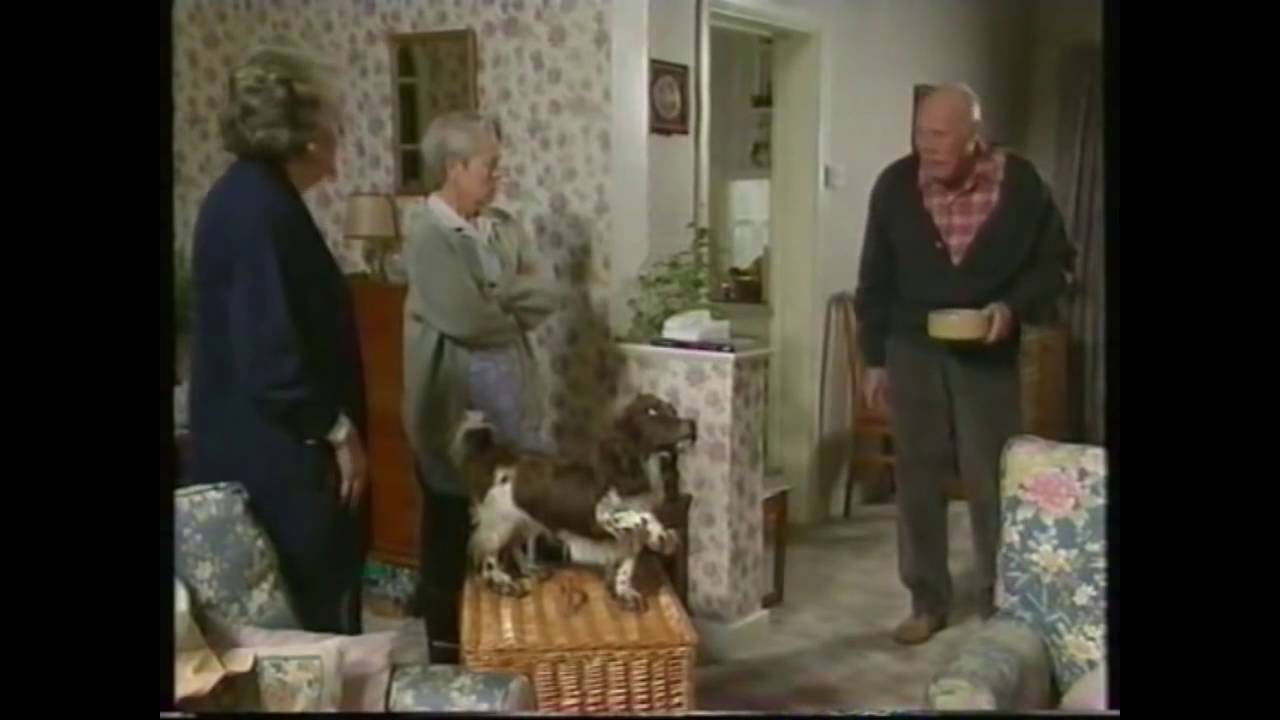Building a sitcom plot using set-pieces
By Chris Head
I coach and direct stand-up and am the author of “A Director’s Guide to the Art of Stand-up”. Meanwhile I have an annual gig working with undergraduates at Bath Spa University to develop a multi-cam studio sitcom, I coach writers and I am about to script-edit a BBC Radio 4 sitcom pilot. One thing that looms large in all this work on sitcom is plotting which I discuss in this piece looking at the ‘set-pieces’ method.
I also deliver coaching and script/pitch consultations with former BBC commissioner/ head of comedy at Sky and now TV producer Lucy Lumsden. We have an online course coming up on creating, writing and pitching sitcom where we’ll work on your characters, situation, plotting and your pitch. More info here).
Qualities of a good plot
I always think that a good sitcom plot has some or all of these qualities:
– A clear goal for the central character and obstacles that stop them achieving it
– bad decisions
– a plot that escalates with every scene upping the ante
– dramatic irony (where the audience know things character(s) don’t)
– lies and secrets
– misunderstandings
– a false dawn (it seems like everything is sorted… then it isn’t)
– a winner / a loser
This is a good check list as you work through your own developing plot. How many of these does your plot feature? Taking a step back, how might you build a plot in the first place?
One approach is simply to give your characters a plausible problem and then the comedy comes from the dysfunctional way they set about dealing with it. (For instance there is a dead body in the hotel that needs removing sensitively). Or you might think of the biggest embarrassment or disaster and work backwards from that climactic point to the start (Peep Show writers Bains & Armstrong were geniuses at this approach.) Or, as Graham Linehan is wont to do, you might plot around set-pieces.
Plotting using set-pieces
Set-pieces are the big funny scenes that the narrative revolves around. In this method of plotting you set about writing as many of these set-pieces as you can think of. It’s essentially like writing a series of sketches for your characters. David Renwick made good use of this approach in plotting One Foot in the Grave. Think about scenes like Victor going to buy some second-hand shoes and discovering they’re still on the feet of the deceased former owner. Or Victor discovering the dog he has been preparing to adopt is in fact dead and stuffed. These are essentially sketches.
Once you have your set-piece scenes, you can then pick one and think about how it might form part of a wider narrative. To illustrate this, here is a set-piece scene from a notional sitcom that I have written for illustration (using my model of how scenes and sketches unfold):
SET-UP: Middle-aged, theatrical Sadie is confirming an appointment on the phone to have her nails done. As she hangs up her daughter Mel enters. (Note the dramatic irony – we know about the nail appointment but Mel doesn’t). Mel asks if Sadie can stay at home and wait for the new fridge to be delivered as she needs to go out and meet a possible investor for her business idea.
REVEAL: Sadie says no because she has an important appointment herself and anyway only Mel is capable of making sure the fridge is the right model and that it has come with all the parts.
ESCALATION: Mel argues that surely Sadie would be capable. She offers to show her the specification of the fridge and all the questions to ask. Sadie plays dumb and struggles with the simple information. In the end Mel gives up and says she’ll stay at home and will rearrange the meeting.
PAYOFF: Sadie’s friend Trudy comes in to take her to the nail place. Mel is aghast at how she’s been manipulated and how her mother’s nails take precedence over her business idea.
This is a set-piece scene. So I have established in this scene that mother and daughter live together. We know that Mel has a business idea, so let’s say Mel is living at home to save money while she attempts to get a business idea off the ground. The only problem being that her self-obsessed mother keeps ruining things for her. In this way I am discovering more about the situation by writing scenes.
Now we have this set-piece we can think about what happens before and after it. For instance, here I have written outlines of scenes to take place either side of the set-piece.
BEFORE
Scene 1: Mel is having breakfast, looking at messages on her phone. Sadie enters. Mel starts telling Sadie that she has been messaged by a possible investor for her new business idea. Sadie retorts that anyone would be mad to invest in her idea; who needs an app to tell them how long they’ve cleaned their teeth for? Mel (for the umpeenth time) starts explaining how it’ll improve dental hygiene and how it’s part of the ‘gamification’ of life, when Sadie freaks out because the fridge is broken. She simply cannot have warm orange juice at breakfast time!
SET-PIECE
Scene 2: The set-piece described above where Sadie gets her daughter to stay in to receive the new fridge (thus missing the meeting with her potential investor) while she, Sadie, has her nails done.
AFTER
Scene 3: Mel is on the phone to the investor. It’s clearly a delicate matter to reschedule the meeting. She’s only in the country for two days and wants to meet face-to-face. Then the doorbell rings and Mel has to open the door to the fridge delivery guy. As per Sadie’s instructions Mel has to unpack the fridge and check the contents of the package; much to the annoyance of the delivery man who has a tight schedule. This also makes the discussion with the investor more complicated as Mel tries to juggle the two things. Mel discovers one of the shelves seems to be missing and starts to check the rest of the (massive amount of) packaging. She hands the phone to the delivery guy and he and the investor end up having a nice chat about fridge models.
Notice here that we’re figuring out the plotting first. Actually writing the scenes will be the next stage and is much more effective and efficient with this scaffolding in place.
Plot lines
Notice how in the above we also have two plot lines: the A plot and the B plot. The A plot is the main story and takes the lion’s share of the screen time (in this case Mel chasing an investor). The B plot is a secondary strand that has less screen time and unfolds alongside the A plot (the fridge situation). Here there also seems to be the beginnings of a C plot which I might develop; namely the mother getting her nails done. So this is how our plot is breaking down:
A PLOT – Mel’s teeth cleaning app business idea and the courting of an investor
B PLOT – the fridge
C PLOT – Sadie’s nails
Classically in sitcom plotting, the plot lines collide at the end of the episode. With this in mind I’m already starting to wonder how these threads collide. Having set up that the investor – let’s call her Stephanie – has an interest in fridges, maybe in the final scene Mel and her at last meet – in Sadie and Mel’s home – and just when the meeting about the app seems to be going well, Sadie breezes in and starts going on about how wonderful the fridge is. Stephanie’s interest switches. Sadie explains it’s a new company with an innovative design. Stephanie says she has thought of investing in fridges – hence her earlier interest. She thanks Sadie and decides to invest in a fridge start up instead of in Mel’s app.
This feels like a good finish. I now need to answer the question: why does the meeting have to happen at home? One answer could that yet again Sadie has forced Mel to stay in for some reason and so this time (thinking she has at last got round this issue), Mel invites the investor to their home. This is a false dawn. Mel thinks she has at last solved the problem of meeting the investor but as we’re about to discover it’s all going to go wrong for her.
But why is the mother so uncaring about the development of her business? Does she simply dislike her daughter? Or – in a reverse of the usual sitcom trope of the parent trying to get rid of the adult child – is she sabotaging her to keep her around? Why does she need her around? It’s in asking and answering these kinds of questions that more scenes will suggest themselves as this plot and this sitcom evolve.
Working on (or wanting to work on) a TV sitcom script? Chris is working with TV producer, former BBC Comedy Commissioner/ Head of Comedy at Sky Lucy Lumsden. Together they’re leading an online course on the art, craft and business of TV sitcom. Great writing coaching, script development and invaluable horse’s mouth industry insights:
https://www.chrishead.com/events/the-art-craft-business-of-tv-sitcom-with-chris-head-lucy-lumsden-3
And you can read chapter 1 of Chris’s stand-up book for free here:
https://bloomsburycp3.codemantra.com/viewer/5b6331436b2f0700011dd33b
 Or buy your own copy of the book here:
Or buy your own copy of the book here:

